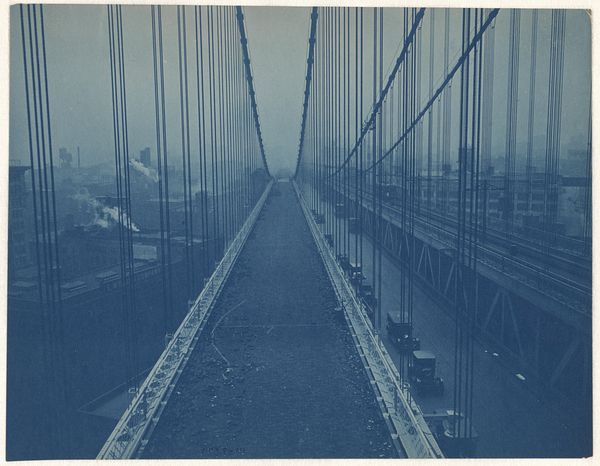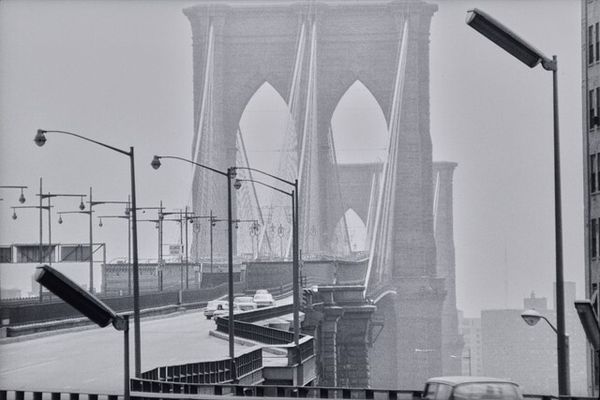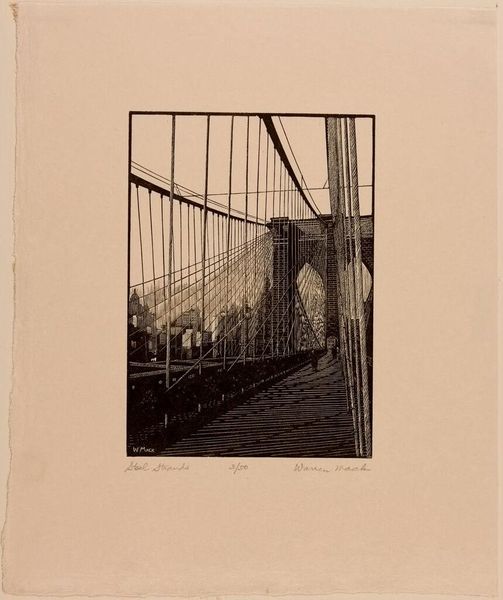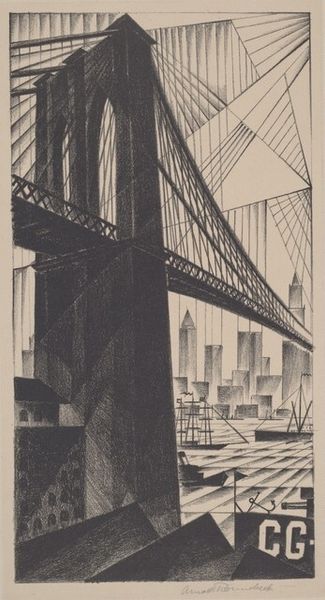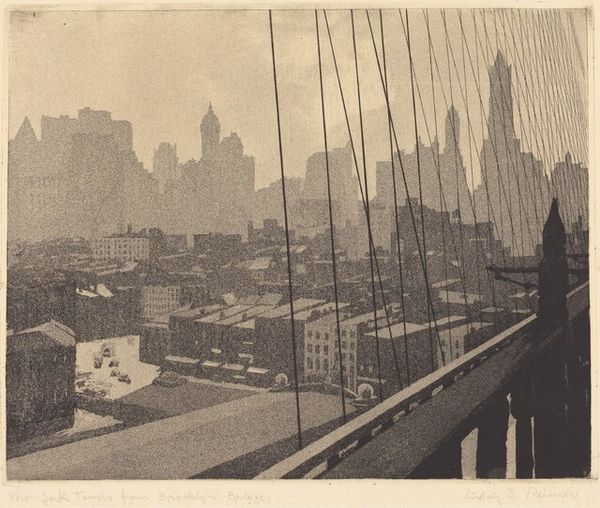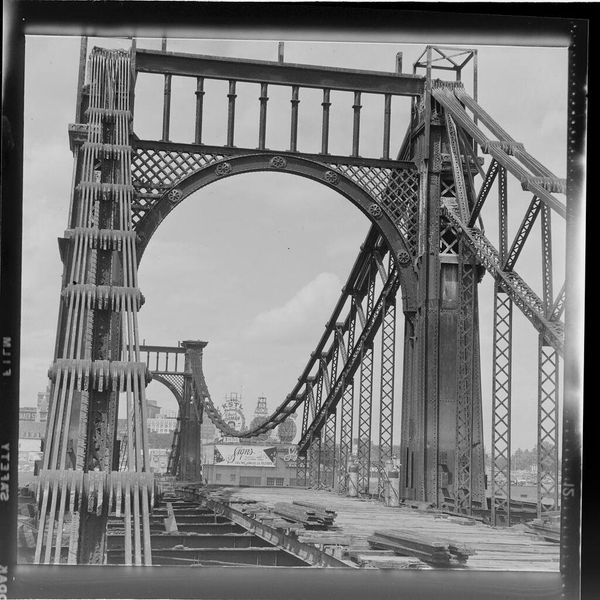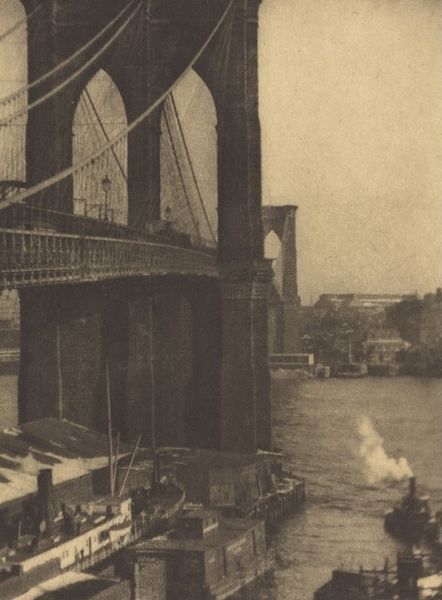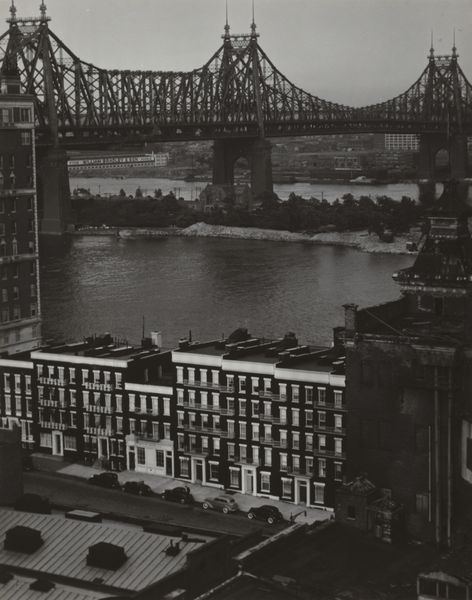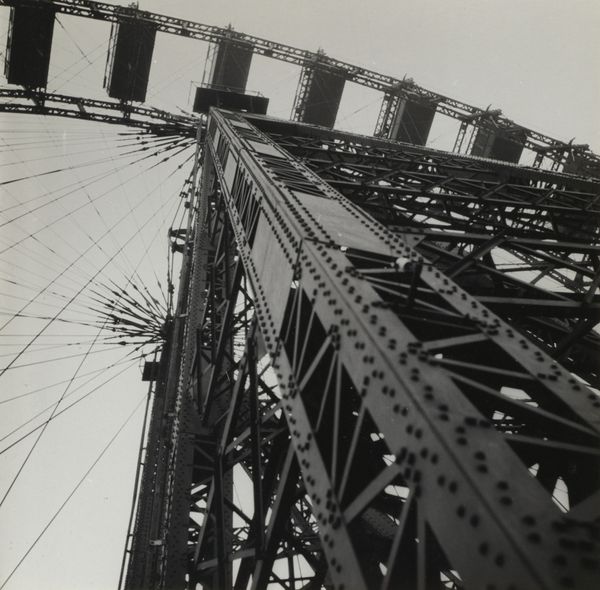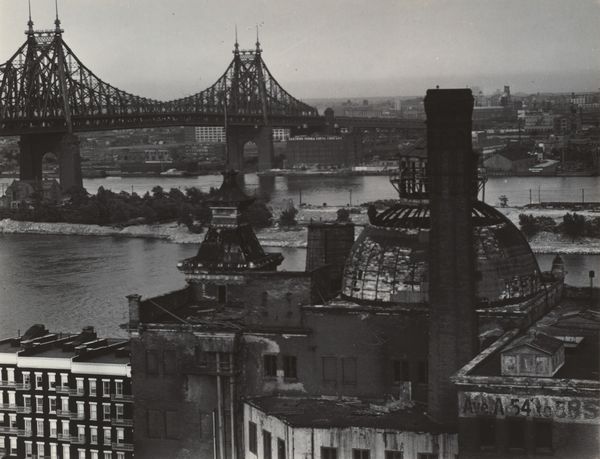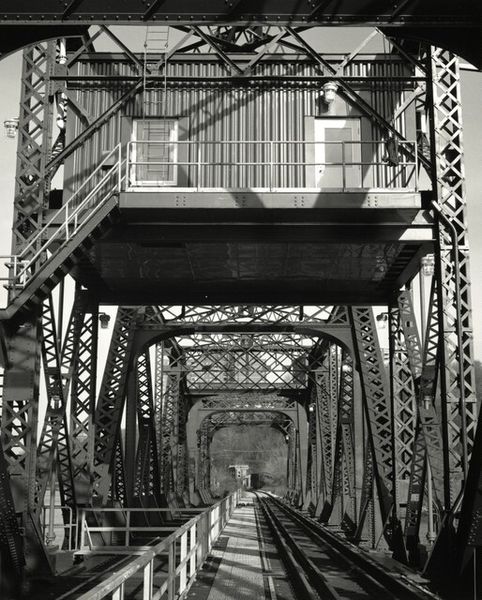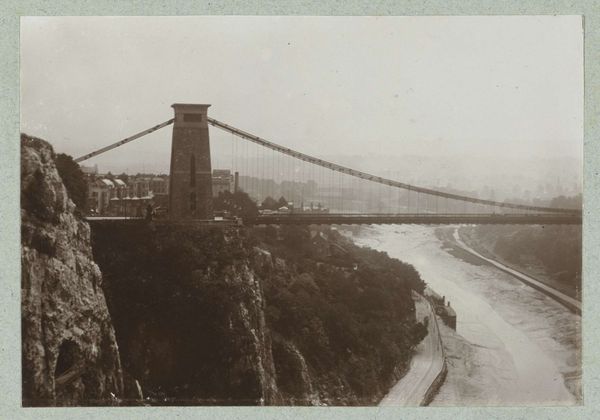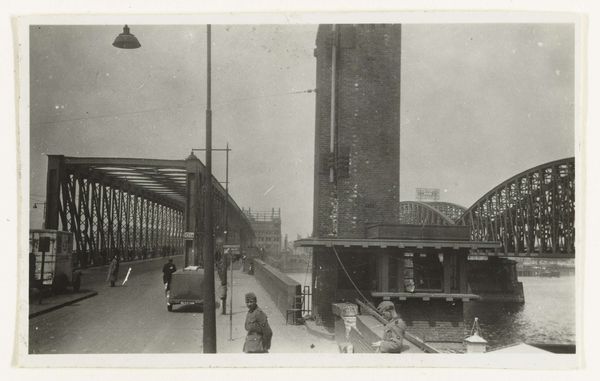
photography, gelatin-silver-print
#
black and white photography
#
landscape
#
outdoor photograph
#
outdoor photo
#
black and white format
#
photography
#
geometric
#
gelatin-silver-print
#
monochrome photography
#
line
#
cityscape
#
realism
Dimensions: image/sheet: 10.1 × 7.4 cm (4 × 2 15/16 in.)
Copyright: National Gallery of Art: CC0 1.0
Curator: Ah, this photograph, "Brooklyn Bridge," dating from the 1920s, a gelatin-silver print by Herbert Seligmann. Isn't there something breathtaking about it? Editor: Breathtaking, yes, but also slightly melancholy. The stark monochrome and sharp lines give it this stoic, almost severe quality. The bridge seems less like a pathway and more like a cage. Curator: I see what you mean, but for me, the cage transforms into a kind of sanctuary. Look at those radiating cables. They remind me of being embraced, the perspective itself suggesting I'm being drawn into a future dreamed by the builders of the city. Editor: Interesting. Considering the time period, Seligmann may have captured something of that interwar tension, you know, that looming feeling of instability masked by the appearance of progress. Bridges, especially during that era, stood as both symbols of connection and potential escape amidst anxieties. Curator: Maybe, but to me, it speaks of a very tangible striving, reaching. And Seligmann uses the interplay of light and shadow so cleverly to highlight these ascending lines. The American flag at the very top… almost lost, but resolutely present. A quiet optimism perhaps? Editor: I'm compelled by how few people we see. They seem purposefully isolated. Considering debates at that time about industrialization versus individual liberty, their presence is both an endorsement and a warning about urban space. Curator: Perhaps Seligmann invites us to become aware of ourselves as individual actors within these huge constructs? After all, the bridge also emphasizes geometry: this tension of human scale in this architectural marvel... And he chose to print it in black and white, stripping it down, perhaps urging a deeper reading. Editor: Exactly! We could argue his technique, the black and white, it's not merely aesthetic, but a critical commentary. It highlights that social contract—visible yet fragile as any photographic print. Curator: So the next time you are near it or thinking about the Brooklyn Bridge, you could think, instead, about seeing something from the past from new light and finding something interesting. Editor: Yes, perhaps it’s about the act of traversing, not just the structure itself. Thanks for pointing it out in that interesting and lovely point.
Comments
No comments
Be the first to comment and join the conversation on the ultimate creative platform.
